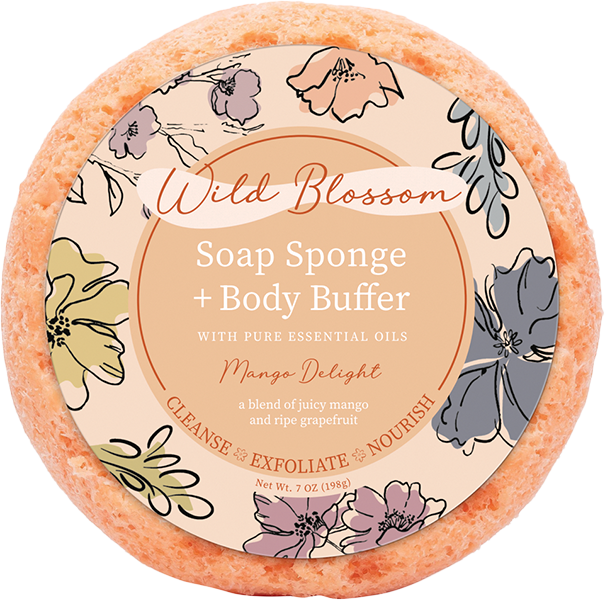Tasting Menu
You’ve probably already noticed it in your Instagram and Facebook feeds; the fancy doughnuts, gourmet cakes, melt-in-your-mouth cookies, and the exciting ice cream combos all point to one thing: food is big.
It’s also a delicious business. So hungry are today’s customers for foods that delight and satisfy, that their appetites drove a $140 billion industry in 2017. That was an impressive 12.9 percent jump from 2015. And that craving is expected to be on a steady upswing for a while.
Get at a slice of the pie
Since the specialty food industry is sizzling hot, you, as a gift shop retailer want in. But you have your own limitations: you only have a limited amount of shelf space and you worry about expiration dates since you don’t have a refrigerator. How do you capitalize on the popularity of specialty foods while still staying true to your core business? There are ways to make all that work together, experts say.

First rule of business: Go slow. It’s the advice that Andre Kreft of Savor, maker of shortbread cookies, once received from a fellow baker. “I would suggest that to my potential retail accounts. Invest in food products that have a long shelf life, but purchase small amounts,” Kreft suggested. “The worst decision is to buy massive amounts on the first order and be left with a large amount of outdated stock.” Pay attention to the “best by” date.
“And if there is leftover product and the date is fast approaching, use it to create goodwill with your customers. Offer a free bag to loyal customers, enlist them to come up with new ideas to make something new with the product,” he added. Savor’s Krakatoa cookies, for example, have been used as crusts for cheesecakes.
Which products to bite into and when
Among the mouth-watering array of goodies, which ones will your customers salivate over and actually buy? Sheila Rhodes suggested two surefire ways to get there: go by what you love the most and ask your customers what they would love, too.

“Shopowners should carry food products that they feel really passionate about, that they like to use at home,” said Rhodes of The Small Batch Kitchen. “That way, when a customer asks what the flavor is like or how to use it, the shop owner can have a conversation about it and be excited to talk about it. Customers get excited about flavors that they see other people loving too.”
Being able to start with flavor profiles that your customers already love is a safer route to selling specialty foods, Rhodes suggested.
Don’t forget the focus of your shop: gifts. Christine Smith of My Pasta Art suggested stocking specialty foods that can be used for many gift-giving occasions: as hostess gifts, stocking stuffers, and themed dinner events.

Celia Glowka, co-founder, Caramel Caravan Co., agreed. Her wholesale business sells handcrafted caramels in a variety of traditional and more offbeat flavors. “Taste is key but packaging can also make a difference, especially if food items are being given as gifts to others. Look for both when you consider options,” she advised.

Keep an eye on source and season
Your foodie customers need to be wooed year-round with foods that cater to seasonal appetites. After hitting the farmer’s market in the summer, spreads and relishes that tie to what’s fresh in produce or fruit will stand a better chance of success.
“Trying to keep a few SKUs dedicated to the year-round crowd pleasers and then carving out some space to seasonal flavors is important,” Rhodes said. Jeff Flathau of Flathau’s Fine Foods advised retailers to consider other practical aspects as well. “Make sure you have room on your shelves. We find that retailers who have only one or two items of our product do not sell as well as ones who offer a larger assortment. You need a decent presence of food items to attract customers.”



Today’s customers are very picky about the food choices they make, said Erika Wilkins of Doc & Artie’s, which sells infused beverages and foods. “They desire to consume quality products made with quality natural ingredients that they can understand and enjoy,” she said of consumers. “They want to know that the manufacturers who produce their products have their best interest in mind.”
One of the most convenient ways to best get to know regional manufacturers is to shop regional food shows. Suzanne Pruitt of Urban Expositions said that the Philadelphia Gift Show has launched a special Northeast Flavors gourmet section to highlight local foods to bring local foodies and artisanal food makers together. The equivalent for the Seattle Gift Show is also being rolled out.
Sampler platter
The best way to sell food? Have customers try them. Keep samples gently policed so not one customer is eating entire batches of food, professionals advise.
“Samples are definitely an important part of strategy for introducing a new product, but retailers need to use them in moderation,” said Jude Sharp of The Unsweetened Tooth. “When offering samples, make sure to offer the products for sale and have them conveniently placed next to the sample table. Try to think of giving away samples as part of a community-building event to add more value to your customers.”

Sheila Rhodes has found that samples can be kicked up a notch further with much success. “Cook up a recipe like cakes or cookies or pair with a cheese and our sales spike even more. People like to see how easy it is to use a product at home.”
Indeed specialty foods are an easy win for gift retailers like you. As consumers drool over all things local and fine foods, you can lap up sales by whetting their appetites and serving something fresh in store.

























